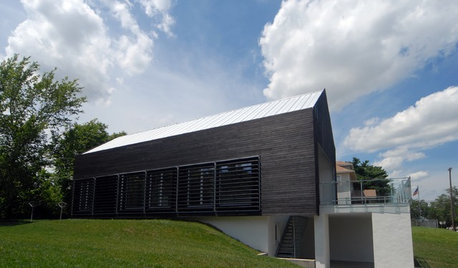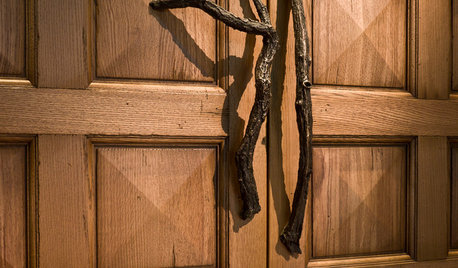Wood boring pest, need identification help
Jules (5a S.E. VT.)
9 years ago
Related Stories

PETSHow to Help Your Dog Be a Good Neighbor
Good fences certainly help, but be sure to introduce your pup to the neighbors and check in from time to time
Full Story
EARTH DAYHow to Help Your Town’s Beneficial Birds and Bugs
Make a habitat using local materials to provide a home to the creatures that help our gardens
Full Story
LANDSCAPE DESIGNHow to Help Your Home Fit Into the Landscape
Use color, texture and shape to create a smooth transition from home to garden
Full Story
PETS6 Ways to Help Your Dog and Landscape Play Nicely Together
Keep your prized plantings intact and your dog happy too, with this wisdom from an expert gardener and dog guardian
Full Story
REMODELING GUIDES'Yakisugi-ita' Is Setting the Siding World on Fire
Exterior wood siding created by a Japanese burning technique is now alighting in the Western world
Full Story
WOODWoodipedia: Make a Solid Choice With Oak
Forget those low-end products of old. Red and white oak today are beautiful, versatile and relatively inexpensive
Full Story
EARTH DAYThe Case for Losing the Traditional Lawn
Work less, help the environment and foster connections by just saying no to typical turf
Full Story
GARDENING GUIDESHow to Keep Your Citrus Trees Well Fed and Healthy
Ripe for some citrus fertilizer know-how? This mini guide will help your lemon, orange and grapefruit trees flourish
Full Story
GARDENING GUIDES6 Steps to Creating Your Butterfly Garden
Encourage these fanciful winged beauties to visit your garden while helping restore their fragmented habitat
Full Story
LANDSCAPE DESIGNEnergy Now: Designing a Garden That Gets You Going
Serenity has its place, but a garden that recharges and motivates you can be a beautiful thing
Full StorySponsored
More Discussions









Jules (5a S.E. VT.)Original Author
Jules (5a S.E. VT.)Original Author
Related Professionals
Alexandria Landscape Contractors · Aurora Landscape Contractors · Commack Landscape Contractors · Golden Gate Landscape Contractors · Long Beach Landscape Contractors · Mahwah Landscape Contractors · Merrifield Landscape Contractors · Adrian Decks, Patios & Outdoor Enclosures · Foothill Farms Decks, Patios & Outdoor Enclosures · Fresno Decks, Patios & Outdoor Enclosures · Livingston Decks, Patios & Outdoor Enclosures · New York City Decks, Patios & Outdoor Enclosures · Palmetto Decks, Patios & Outdoor Enclosures · San Antonio Decks, Patios & Outdoor Enclosures · Eustis Decks, Patios & Outdoor EnclosuresJules (5a S.E. VT.)Original Author
Jules (5a S.E. VT.)Original Author
Jules (5a S.E. VT.)Original Author
mad_gallica (z5 Eastern NY)
Jules (5a S.E. VT.)Original Author
Jules (5a S.E. VT.)Original Author
Jules (5a S.E. VT.)Original Author
Jules (5a S.E. VT.)Original Author
Jules (5a S.E. VT.)Original Author
NHBabs z4b-5a NH